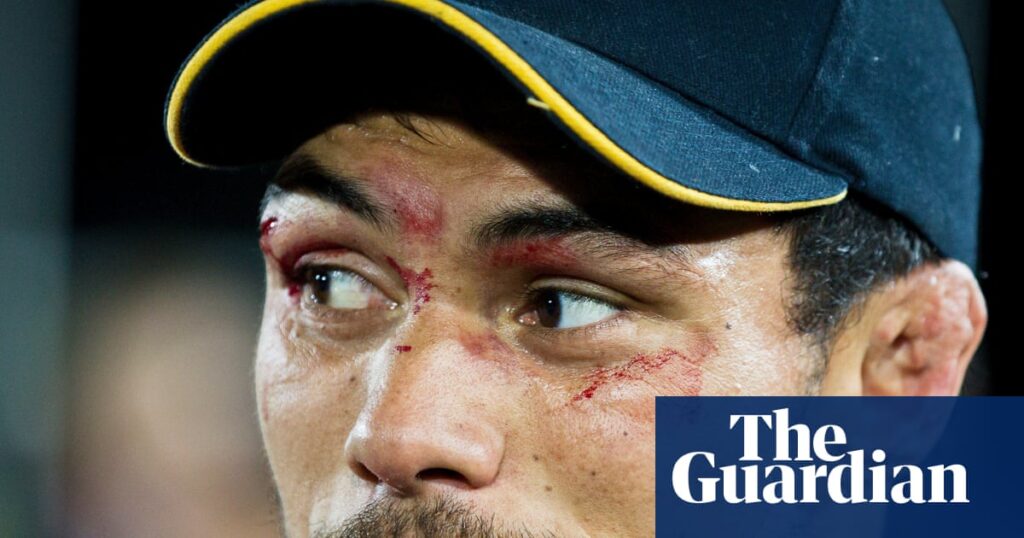
First came the headaches, a feeling of pressure in the head. Then, Shane Christie started experiencing macabre hallucinations of his own death. Later, the once sociable New Zealand rugby player began getting into arguments with loved ones, and towards the end, paranoia consumed his trust, making him fearful and depressed.
By the time Christie took his own life at the age of 39 in August—some 10 years after he first started experiencing the headaches—he was almost unrecognizable to those closest to him. Holly Parkes, Christie’s former partner, cared for him in the last year of his life. Parkes recalls feeling desperate and alone as she watched Christie disappear further into the illness he believed was caused by multiple head injuries.
“I would get in the car, and I would cry, and I would call people… I would speak to every friend that I had… I called the brain injury trust… I was trying to speak to people in the [US], like, what do we do? How can I help him?” Parkes shared.
From the Stadium to the Shadows
Before his symptoms took hold, Christie had been a passionate rugby player, competing in domestic competitions and Super Rugby, and representing New Zealand in the Māori All Blacks and All Blacks Sevens. To those closest to him, he was a lively, honest, and forgiving man.
“He loved his friends, loved his family… was very trusting of people,” Parkes says. “He didn’t make his life more complicated than it needed to be. He just focused on big things.”
But life did become complicated for Christie. During his career, he experienced multiple impacts to his head, the accumulated effects of which took their toll. In 2016, during his stint as co-captain of the Highlanders, he took a significant blow during a game against the Kings in South Africa. Christie was flown home and was “alone in the dark for two weeks,” Parkes said. “He cannot even look at the window… because the light is so bad.”
Craig Morice, a Nelson-based lawyer who became friends with Christie, first got to know him in 2017 when he was brought on pro-bono to help with Christie’s retirement negotiations with New Zealand Rugby (NZR) and the New Zealand Rugby Players Association. According to Morice, the two groups were “taking their time to assist him adequately, both in respect of specialist medical care and working out what his future options were.”
Raising Awareness and Seeking Change
Christie suspected he suffered from chronic traumatic encephalopathy (CTE)—a progressive brain disease associated with head impact, which can be diagnosed only posthumously. His symptoms were consistent: fatigue, mood and personality changes, confusion, paranoia, anxiety, headaches, and suicide. His case has been referred to the coroner.
Christie has donated his brain to New Zealand’s human brain bank, which is studying athletes’ brains for signs of CTE. If diagnosed, he could become the second New Zealand rugby player after Billy Guyton confirmed to have the disease. With this, Christie’s desire to raise awareness about CTE and force changes in New Zealand’s rugby industry could take on new life after his death.
When Billy Guyton, a rugby player and friend of Christie’s, took his own life after battling CTE in 2023, Christie’s resolve to see change happen deepened. He started the Billy Guyton Foundation to highlight the risks of repeated head impacts. Christie saw himself in Guyton and became convinced he too was suffering from CTE, Morice says. But his friend’s death also accelerated his own decline.
Scientific Exploration and Future Implications
At the University of Auckland’s Centre for Brain Research, researchers examine the donated brains of more than 1,000 people. It is here Guyton’s CTE was discovered, and where Christie’s brain will be investigated. Dr. Helen Murray, a senior research fellow at the centre and former national ice hockey player, explains that CTE is complex and there is no way to tell how prevalent it is among athletes or the wider public.
“While not every contact sport player will develop a brain condition, the risk is higher for those groups,” Murray says. Researchers are only just starting to understand CTE, but what they do know is a protein called tau overdevelops in the brain in areas where there have been impacts. It clumps up and chokes off blood vessels and the neural pathways.
“It looks like these big flame-shaped fibres that’s all over the cells,” Murray says. “Once it’s formed, it’s really hard to get rid of.”
Murray hopes her research will, in time, inform ways to minimize the risks of developing CTE—whether that means through shorter sport seasons, better aftercare, or delaying contact sports for children. Christie’s loved ones hope his final big play—donating his brain to research—will push his desire for CTE awareness to the fore.
“I think people weren’t actually listening when he was trying to explain things before,” Parkes says. “But as the years go on, the things that he said in the final years of his life may become even more poignant and even more profound.”
In New Zealand, Lifeline: 0800 543 354. Suicide Crisis Helpline: 0508 828 865 / 0508 TAUTOKO (24/7). This is a service for people who may be thinking about suicide, or those who are concerned about family or friends. Depression Helpline: 0800 111 757 (24/7). In Australia, the crisis support service Lifeline is 13 11 14. In the UK and Ireland, Samaritans can be contacted on freephone 116 123, or email [email protected] or [email protected]. In the US, you can call or text the 988 Suicide & Crisis Lifeline at 988 or chat at 988lifeline.org. Other international helplines can be found at befrienders.org.







